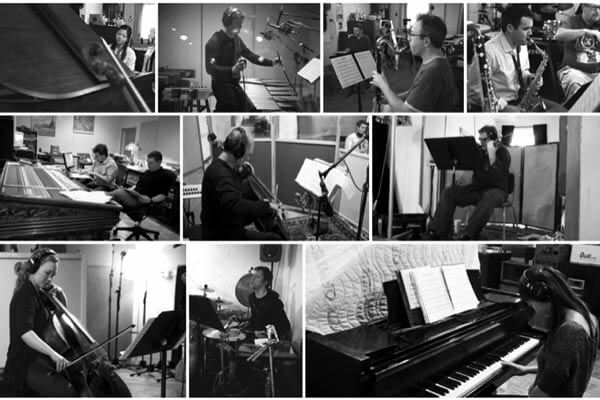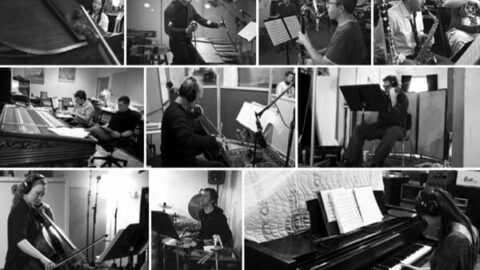This Sunday, February 10, Bill Ryan’s Billband is having a release concert at Le Poisson Rouge. “Towards Daybreak” came out on Innova on January 29, and you should remember this title: my bet is that it will make a lot of Best-of-2013 lists…
Your previous album, Blurred, was released almost 9 years ago. Was this the time you needed to write this music, or is it just the reality of being a successful composer/conductor/producer/educator?
Right after that first release I had my third child, my father passed away, and my family moved to Michigan. I guess you could say that life intervened. Then at GVSU I dove into creating a contemporary music culture, from basically nothing. I started the New Music Ensemble, a performing series (Free Play) and a composition studio. I was still composing during all this, but slowly. I probably wrote 1-2 pieces each year. Last year I took a sabbatical from school, which allowed me to focus for almost 9 months on my own material. I’m actually pretty happy with the balance I’ve found between my own music and my work as a professor. I wouldn’t change a thing.

You seem to have painted Towards Daybreak with lighter strokes than Blurred but with darker shades too. Was it a conscious choice or the natural evolution of your music?
I think of the new album as more personal than the first, more of a window into who I am. As I get older, I’ve noticed that my personal experiences, both good and bad, are finding their way into my music. A few tracks are about the experience of losing my parents, which came out dark and contemplative. I didn’t set out to write them that way, it was all very organic and just happened. There’s also brighter, more optimistic music about my children, about my move to Michigan, and other experiences.
Towards Daybreak features an extended version of “Blurred” from your eponymous 2004 album. Is it a leading thread—for your listeners—through your musical world?
Blurred has become my minor hit. It’s my most performed work by a longshot. I like to think that’s because it’s a strong composition, but another reason is the flexibility I designed into it. It can be performed by piano and any additional instruments, and the players can also design the length. It’s been performed by a solo pianist, to an electric chamber ensemble, to an orchestra, to everything in between. I put this on the new album because this performance was so different than on the first, and also because it’s a very important work for me personally–addressing the loss of my mother.
With a growing number of ensembles all over the western hemisphere, is the composer’s band/ensemble still a good model to get one’s music out there?
I think it is the ideal model. I get to compose muliple works for the same group, over a very long time period, and am involved in every step of performance preparation. It gives me the chance to really explore possibilities within our instrumentation. Of course it would be much easier to just send off parts to existing ensembles, but there’s something to be said about the connection between me and the performers when it’s my own group, who are very familiar with my music.
Is your creativity stimulated visually? If so, what kind of images have the most impact on your music?
I am incredibally stimulated by beautiful environments. I love to backpack and camp, and find the mountains out West very inspiring. They’ve never actually inspired a specific piece, but rather, they put me in a frame of mind where I can be very productive in general.
























